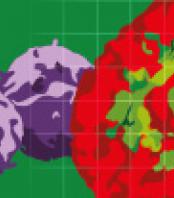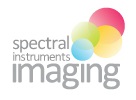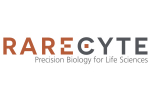Attana biosensors provides a reliable, fast and versatile label-free method to study molecular interactions.

Automated microscopy and Spatial Proteomics
Real-time, label free cell analysis
Nano and micro particle analysis

Accelerate to discover
Related topics
EV's and Nanoparticles in "Full Spectrum View" with the new Cytek ESP module

Jul 19, 2024
Cytek’s Enhanced Small Particle (ESP) Detection Option expands the capability of your Cytek Aurora or Cytek Northern...
Automatic, Real Time Acquisition of Bioluminescent Kinetic Curves

Jun 27, 2024
Watch this pre-recorded webinar with Dr. Andrew Van Praagh to learn how our new Aura software feature —Kinetics—...
Theranostics: From Mice to Men and Back

Jun 25, 2024
Recorded webinar
Presenters: Prof. Dr. Ken Herrmann and Prof. Dr. Katharina Lückerath – Moderator: Hannah Notebaert
Orion 2024 AACR poster: 17-plex single-step stain and imaging of cell Lung Carcinoma

Jun 21, 2024
RareCyte Orion is a benchtop, high resolution, whole slide multimodal imaging instrument. A combination of quantitative...
New release now available: Cytek Amnis AI v3.0 Software

Jun 17, 2024
The new Cytek Amnis AI v3.0 image analysis software features an integrated transfer learning algorithm, an option to...
Cytek webinar: Imaging Flow Cytometry for Chromosomal Assessment in Hematological Malignancies

Jun 7, 2024
In this webinar, we will describe a new innovative approach we developed that resolves these limitations. The method...
Hypoxia in the Tumor Immune Microenvironment (TIME)

Jun 6, 2024
Thursday, 11 July 2024, 16:00 CET | 10:00 EST
Zaver M. Bhujwalla, PhD
X-RAD 320 for irradiation therapy during quantifying study for in vivo collagen reorganization

Jun 5, 2024
Quantifying in vivo collagen reorganization during immunotherapy in murine melanoma with second harmonic generation...

Jun 17, 2016
Under the supervision of Professor Eugenia (Éva) Valsami-Jones and Dr. Iseult Lynch, the Environmental Nanosciences group aims at understanding reactivity at the nanoscale, and how this impacts on processes such as biomineralisation, environmental transformation and ageing, and nanoparticle interactions with organisms. In particular, the group focuses on:
- Nanoparticle interactions with biomolecules in the environment (natural organic matter, secreted proteins, organic pollutants, etc.) – investigating the “eco-corona” and secondary pollutant effects.
- Determination of the fate and behavior of nanomaterials in the environment.
- Development of high throughput screening applications: nano(eco)toxicology, bionanointeractions and assessment of environmental fate of nanomaterials.
The group will use the Attana instrument to characterize nanoparticle behaviour in different environments and to develop an assessment and prediction tool for nanoparticle behavior, including dissolution, homo and heteroagglomeration and binding of environmentally relevant biomolecules and macromolecules.
“The Attana Cell 200 will be a vital instrument to characterize and understand nanoscale materials, which can behave in novel and unexpected ways. Their very small size and exceptionally high surface area to volume ratio are features that alter their properties enormously. This results in a high reactivity and a large area onto which biomolecules and other environmental entities can bind. The kinetic interaction analysis enabled by the Attana Cell 200 is essential to understand and safely utilize nanoproperties for a range of environmental applications” comments Dr. Lynch.
Attana CSO, Teodor Aastrup adds, “Environmental Nanosciences at University of Birmingham is one of the leading groups in nanoparticle characterization and we are excited about the Attana instrument being part of their important research. It is yet another confirmation of the importance of understanding the kinetic interactions in complex and realistic environments.”
Brand profile
Attana biosensors provides a reliable, fast and versatile label-free method to study molecular interactions.
More info at:
www.attana.com/